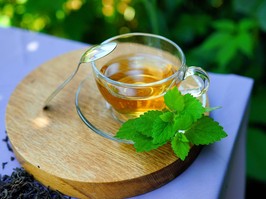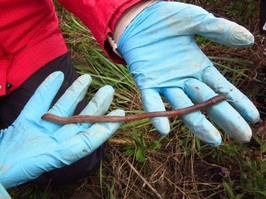protecting plants, protecting life
oxygen, food and income are only three of the crucial benefits of healthy plants. the list is much longer.

harrowsmith magazine
by lisa lafontainewhile we hardly need to extol the virtue of plants, there is an ongoing movement to bring attention to the pests that threaten them, why we should care, and what we can do about it.healthy plants are the foundation for all life, ecosystems and food security. when we protect plants, we protect life. that is why countries around the world—including canada—are engaged in the international year of plant health.in december 2018, the united nations general assembly declared 2020 as the international year of plant health (iyph). the year is a once-in-a-lifetime opportunity to raise global awareness on how protecting plant health can help end hunger, reduce poverty, protect the environment and boost economic development.safeguarding crops, ecosystems, forests and natural habitats from invasive plant pests and diseases is a tall order. we do this by focusing on preventing plant pests from spreading, because just as with human health, preventing a problem is far more cost effective than managing a full-blown emergency.
why we care
oxygen, food and income are only three of the crucial benefits of healthy plants. the list is much longer. plants give us medicine, wood for building materials, and fibres for clothing. they provide protection from the elements. less tangible and more life enriching, plants and green spaces provide comfort and a healthy sense of well-being. canada is home to globally important biodiversity, including one-third of the world’s boreal forests, one-fifth of its freshwater resources, the longest coastline on the planet, and a diverse range of ecosystems. canadian crop industries generate over $34 billion per year in exports.1 our forest industry contributes $24.6 billion to the economy.pests and threats
plant pests are one of the main drivers of losses in biodiversity and crop productivity. they are responsible for the loss of up to 40 percent of global food crops, and for trade losses in agricultural products exceedingus$220 billion annually.3 insects, weeds and diseases have established themselves and spread more easily due to increased trade in a diverse range of plant commodities and because of climate change.the emerald ash borer and plum pox virus are two examples of pests that have had a large impact in canada as a result of the intentional or unintentional movement of infected plants or plant parts into and within our country.by raising awareness of plant health, we want canadians (and people around the world) to understand the role they play in protecting our crucial plant resources.plant protection in canada
the canadian food inspection agency (cfia) is committed to protecting plants, animals and food, to enhance the health and well-being of canada’s people, our environment and our economy. the cfia engages in plant pest surveillance and containment; sets, implements and enforces standards and rules; and takes action to minimize impacts and promote resilience when emergencies do occur. as canada’s representative to the international plant protection convention, the cfia is canada’s national plant protection organization and is leading and coordinating canada’s activities in support of the iyph.“while cfia sets the standards for plant health in canada, we don’t safeguard canada’s plants on our own. we work with other departments and organizations. we also rely on the help of citizen scientists,” says william anderson, chief plant health officer for canada and cfia’s executive director of the plant health and biosecurity directorate. “this year, we are engaging in a variety of activities in support of the iyph, including an international photo contest. activities and information from across canada can be found at science.gc.ca, where people will find an outreach toolkit filled with ideas and ways to get involved.”how to help
everyone has a role to play in plant protection. citizen scientists have been responsible for new findings of invasive forest pests, such as the emerald ash borer, which means that it’s important for everyone to know what grows and lives locally.you can learn about canada’s plant pests and invasive species at inspection.gc.ca\pests and report plant pests to cfia through inspection.gc.ca\pests or on social media @inspectioncan. let cfia know what you found and where, and include a photo or sample if you can.buy local and burn local
if you’re a camper or use wood for heating, buy and burn local or heat-treated firewood so that invasive insects hiding under the bark don’t spread to new parts of the country.if you travel, always declare food, plants, soil and seeds at the border. they might look harmless, but they can carry plant pests that can harm canada’s plants.if you buy or sell plants, seeds or other material, know where they’re from. the same rules apply whether you’re importing or exporting online or through other means.if you’re a gardener, plant native species instead of exotic or invasive species. look for the grow me instead campaign in several provinces.download and use the iyph outreach toolkit from science.gc.ca.if you’re a teacher or youth program leader, include the topic of plant health in your lesson plans by using the youth outreach toolkit from science.gc.ca.“a great start,” anderson says, “would be making a commitment and helping to spread the word about the international year of plant health by getting involved in the #planthealth and #iyph2020 conversations on social media.”lisa lafontaine is a senior communications advisor at the canadian food inspection agency where she leads communications activities on files such as forestry, horticulture and international phytosanitary standards. she also chairs a north american plant protection organization expert group in support of the un’s international year of plant health 2020. lisa is an award-winning communications specialist with nearly 30 years of experience and a passion for canada, the environment and nature. in her off time, this former journalist can be found sailing, kiteboarding, or practicing yoga on the ottawa river.
this story previously appeared in harrowsmith magazine. published by moongate publishing inc., harrowsmith provides a purely canadian take on country living, the environment, and the sharing of useful information for country dwellers and city folk.
 4 minute read
4 minute read





